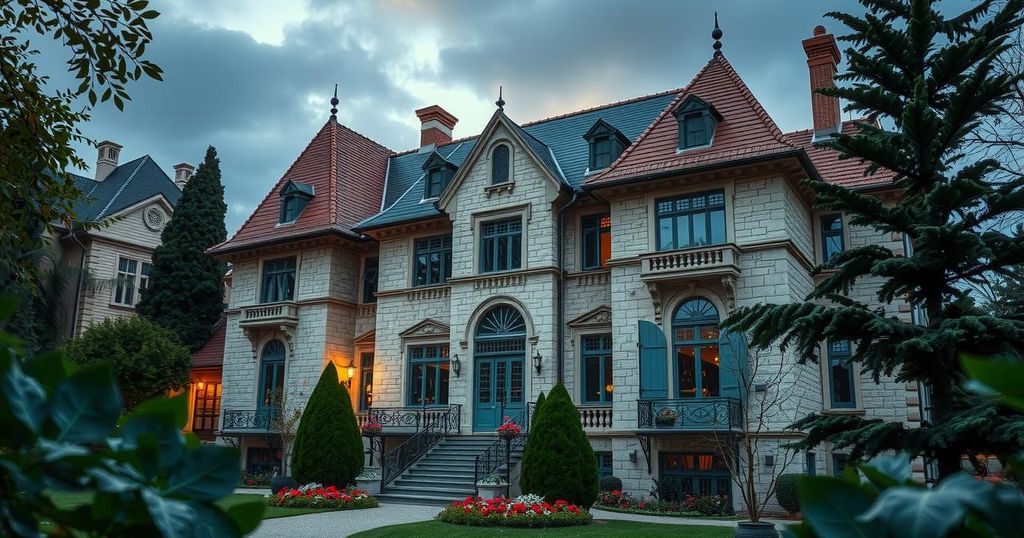“Jewish Country Houses” co-edited by Abigail Green, explores how the ability to own grand homes became a symbol of equality for Jews in Europe after centuries of exclusion. As they seized the opportunity in the 19th century, these homes represented both wealth and a newfound status. However, the Nazi era shattered many of these legacies, infusing the narrative with themes of loss and resilience. Through vivid photography and scholarly contributions, the book stands as a testament to the intertwined histories of Jews and their properties, ultimately serving as a site for education on antisemitism.
In the pages of Abigail Green’s newly co-edited book, “Jewish Country Houses,” lies a rich tapestry that transcends mere opulence to explore the profound significance of grand homes in Jewish history. For centuries, European Jews were denied the fundamental right to own property, but the 19th century heralded a shift. As these rights opened up—first in Britain in 1831 and subsequently across Europe—those who could afford it embraced their newfound privileges by purchasing luxurious homes. This act was a declaration of ownership, a bold statement of belonging that went beyond the accumulation of wealth; it represented an assertion of equality, a rare bridge into the social and political elite from which they had long been barred. Yet, these homes were often steeped in contradiction. Green describes them as “subversive houses,” unique enclaves within a predominantly Christian feudal system. Their existence not only challenged perceptions of Jewish identity but also encapsulated the precarious journey toward potential aristocracy. Despite this elevation, criticism arose within the Jewish community, labeling these properties as symbols of assimilation, suggesting that their owners had distanced themselves from their roots. Green defends this perspective, stating that these affluent Jews were not merely aloof; they engaged deeply with their heritage and actively supported Jewish causes. Throughout the pages of this book, striking photographs bring to life the melancholy and beauty of these estates. Amid towering trees and manicured gardens lie stories of loss and resilience, reflecting the broader narrative of Jewish existence in Europe—especially during the dark trials of World War II. Many homes met tragic ends under Nazi occupation, their owners displaced, deported, or worse. The haunting fate of Max Liebermann’s villa illustrates this sorrow; now a museum, it is a shadow of its former self, emptied of personal artifacts and emotional resonance. Despite the weight of its subject, “Jewish Country Houses” ultimately serves as a beacon of hope, fostering a deeper understanding and appreciation of Jewish history through these properties. It is this duality—the dream of inclusion alongside the scars of a haunted past—that colors the narratives within each chapter. Today, these houses stand not merely as relics of a lost era but as powerful sites for education about antisemitism and Jewish identity in contemporary society.
The history of Jewish land ownership in Europe reveals a complex blend of aspiration and adversity. For centuries, Jews faced legal restrictions on property ownership, which limited their social mobility. The eventual lifting of these restrictions in the 19th century marked a pivotal moment. Those who could purchase land constructed grand residences that became symbols of both their success and their struggles for equality. However, these achievements were violently disrupted during the Nazi regime, leading to a profound loss of heritage and identity. The book aims to not only celebrate these historic homes but also reflect on the darker shadows cast over Jewish life in Europe and their lasting legacy.
Ultimately, “Jewish Country Houses” paints a poignant narrative that intertwines the historical trajectory of Jewish land ownership with personal stories of loss, resilience, and identity. These homes emerge as powerful symbols of both the aspiration for belonging and the deep scars left by the Holocaust. They remind us of the potency of place in understanding cultural history, serving not only as memorials for those lost but also as sites for educating future generations about the complexities of Jewish life in Europe.
Original Source: forward.com

Leave a Reply